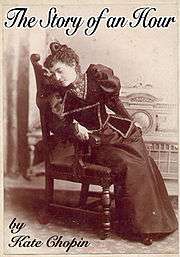The Story of an Hour by Kate Chopin
 The Story of an Hour, written in 1886 is a rare example of a woman exerting her rights.
The Story of an Hour, written in 1886 is a rare example of a woman exerting her rights.
It’s hard to imagine that this story caused an outrage in Chopin’s time, and men burned it in protest. Today, her actions would barely be noticeable, but one must appreciate the setting to understand its historical significance.
The protagonist, Mrs Mallard, may bear this name to suggest that she is a sitting duck, because a mallard is a kind of duck. A sitting duck has no control over its life, and is a target for anyone who chooses to shoot it. Mrs Mallard hears of an accident from her sister in law, who breaks the news to her gingerly, as Mrs Mallard “is afflicted with a heart condition”. Her husband, Brentley, has been killed in a train accident, and the family tries to protect the frail woman.
Initially, Mrs Mallard weeps violently, her breast heaving up and down as it fitting for the romantic era in which the story was written. Then, a calm comes over her and she realizes that she can be independent. She describes her “monstrous joy” at secretly being relieved that her husband is dead and decides to “open her arms” to life as she breathes in the spring air. She whispers to herself, “Free, free, body and soul free!” as she imagines her new life. “Spring days and summer days” would belong to her alone. “It was only yesterday that she had dreaded that life might be long”, but now, relieved of her duty and tedious existence, she will live for herself and hopes that she will have a long and satisfying life. She realizes that nothing is more important than “self assertion”, a phrase considered blasphemous in her time as a woman had no independence whatsoever.
Chopin raises the issue of a woman having her own desires and needs, opinions and fantasies during a time in which she was considered her husband’s property. Indeed, the word Mrs stems from the word Mr, and is a possessive form; thus, Mr’s Smith means property of Mr Smith. Her life would have revolved around sewing, knitting, cooking, cleaning, shopping and other mundane tasks when she longs for self expression and rejects the oppressive life.
Kate Chopin’s husband did in fact die, and it’s possible that much of her work is autobiographical. She did indeed have parties, dress occasionally in men’s suits, and lived her life on her own terms for which she was continuously harassed and threatened. We can credit many of the gains women have made to this amazing story. I’ll be reading this work and discussing it soon online. Sign up for my literary lessons on the paypal page! SEE YOU THERE~
